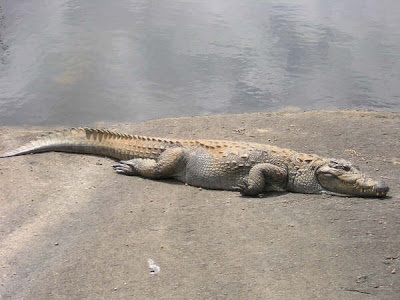
Marsh crocodile Also known as mugger this is a broad-snouted crocodile that lives in shallow slow moving water in rivers, lakes and reservoirs or in marshes. Adults are grey-brown reach 4-5 in length and have a diet of larger fish amphibian birds and mammals usually monkeys but occasionally deer and buffalo during the dry season crocodile sometimes dig burrows for shelter and even migrate several kilometers across dry land to find butter habitat.




